 Last year a friend of mine had to sit me down and explain what ASMR was. Knowing the kind of bubble I live in between work and writing, he was worried I was losing my touch. I'm the first to admit I'm unable to keep up with what makes Millennials tick. I didn't even know ASMR existed let alone that it was making noisy (and not so noisy) people rich. Mashable have an introductory video into the phenomenon in case you're not yet across it. I ended the conversation with my friend incredulous and certain of only two things; (i) my various career paths have all been poorly chosen (ii) I need to keep up with the most savvy generation earth has seen. To that effort, I was proud when I discovered yet another Gen Y staple: reactions. Now there are a lot of Reactions on youtube (I guess they're made by Reactors...or are they just influencers? God help me.) In case you don't know what they are, they're basically filmed reactions to videos or moments. It goes well beyond those viral hits of people's OTT reactions to scenes from Game of Thrones that had everyone feeling things a couple of years back. Reactions have become more sophisticated and exhaustive since their Viral beginnings. Nowadays there's a growing number of (mostly) Millennials who film their commentaries on daily pop culture, but also those who trawl back through the 80s and 90s to "discover" and "react" to classic content. They have channels and followers, and often Stans (=major fans) make suggestions of videos or albums they should watch/listen to and then react to. There's a fair bit of disingenuity going on in a lot of reaction videos; people pretending to watch something for the first time or reacting in a way that suggests they're doing it for the comments (or the likes or the follows). But just like anything else on the web, for every uninformed, implausible video there's an equally honest and fascinating take on Gen X culture. 2019 is proving a huge year for looking back after all this year marks the 30th anniversary of some of the pop world's touchstones. To my mind, Madonna's Like A Prayer was 1989's most important pop artifact. It may've been snubbed by the Grammys, but the press today is unanimous; Like A Prayer is a masterpiece, a game changer and currently the focus of a lot of praise. I could bang on about how for years Like A Prayer was my favourite Madonna album but we live in a Millennial world, and it's increasingly up to them to decide what from our past was significant and important. To that end, I've rounded up some of the most insightful and entertaining reactions to Like A Prayer's main videos after the jump.  I hate to tip my hat to Taylor Swift, but she really was onto something. 1989 really was a watershed year for pop music. As the months roll on this year, you'll find that your social media feeds will be brimming with 30 year anniversary posts. Some key albums from 1989 have had a lasting impact worldwide; others proved transformative in their local markets. There was something about 1989 that pushed a lot of eighties acts to lift their game; to do something to justify your attention into the next decade. So many eighties pop acts seemed to come of age that year. In Australia, as in some other countries in the colonial world, we were still coming out of a bit of a rock music haze. We certainly had lapped up the work of the international superstars, but we were a bit late to the pop party locally. For better or worse, genres other than rock really only started to gain traction in the mid eighties in Oz. You were more likely to find yourself down the pub watching a bunch of frizzy haired guys in acid wash making their air guitar dreams come true than you were to be having a little shuffle in the middle of a heaving dancefloor back then. There were certainly some great Aussie pop acts that emerged in the eighties (mostly for a flash) in Australia, but for the most part we had to wait until the end of the decade for female artists to be given the space to break the rock (chick) mould. Before then it was unheard of for a record company and the media to really get behind a local lady and really give their work the kind of attention usually reserved for the blokes. If you have even an ounce of Australian in you, then you know that Kate Ceberano is a national treasure; a versatile singer who effottlessly jumped across jazz, pop and funk as she paved out an unorthodox career that now spans three decades. In 1989, she released her first proper pop debut; Brave, and for a year she and her Ministry of Fun were everywhere. She achieved great commercial sucess with her solo debut. But more importantly Kate really ushered in a new era for Australian music.
There are a lot of references to music in my Vinyl Tiger novel. Some of it is mainstream music, some not. Sometimes they were just themes that needed a good name drop.
I've put together a playlist on Spotify along with some comments regarding some of the entries and music themes that appear in the first volume of my novel - the 80s, all included below.
Lovebites was the second album by the Buzzcocks. Originally formed in the mid-70s, they were pioneers in the punk music scene. The Buzzcocks line-up changed over the years, but their influence over the indie, punk and Manchester scenes has been enduring. Read more about them here
It’s the kind of music that almost everyone loves today, but just a few decades ago Blondie signalled a complete challenge to the status quo. On Parallel Lines you got the full range of rock, disco and even reggae infused pop, and the blue print for future pop albums.
The range of the disco genre was wide: artists like Donna Summer and Grace Jones, with their natural vocal flair brought some pathos [and camp] to the genre, but for every one of those divas you got more than a couple of Andrea Trues in return. No matter, it was all about the slinky grooves, and if nothing else, we can also thank disco for removing the vocal hurdle which would otherwise have stopped half of the pop/dance acts that arrived in the eighties from achieving what they did.
But before that, filmi, music from films, were by far the most popular song forms in India’s music market. There are certain regal figures in the Indian music scene, among them Manna Day and Lata Mangeshkar. In Vinyl Tiger, the title character spends some formative time in India, collecting music along the way. I imagined him as a kind of early eighties M.I.A, who I think remains without peer when it comes to cannabalizing from the subcontinent and producing something new and provocative.
Acts like Grandmaster Flash would go on to have a lasting effect on hip hop and mainstream music, but it was a handful of artists like Madonna who rode the underground sound right into the mainstream, bringing the new club sound to the masses. And we all know what that particular arrival wound up meaning to pop music.
People are really hard on the eighties. But really, they shouldn’t be. The eighties was the first decade of democratization in pop music. You no longer needed to be a killer vocalist to have a hit record, and you no longer needed to sling a guitar around to be a rock star. You could now just pound away at a keyboard (and not know more than three or four chords). Hell, you could even sling it around your front.
We’re no longer in that wonderful place where anyone has a shot, no matter what they tell you. We live in a world which, thanks to our decade long obsession with talent shows, thinks that having a great vocal range makes you a great artist. But it’s also a piecemeal world where more and more, the mainstream means something less. 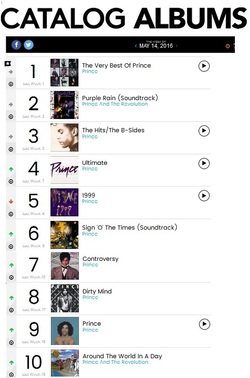 Billboard Billboard Let's face it. The Billboard charts suck these days. No one can make heads or toes of them. You can have the week's biggest selling album but not have the No.1 spot because of streaming calculations. You can have the highest selling single of the week but if you don't get radio airplay then it's like you're persona non grata. There have always been problems with the Billboard charts. Remember back in the 90s how they changed their mind about physical releases and airplay every two weeks. Or how Mariah Carey basically bought a lot of her number ones. One thing I do love about the Billboard charts is how the dearly departed come back to haunt them. It's like they drag chains on the ground and run fingers down blackboards to remind Billboard and music buyers of what it's really all about. The Purple one could barely get a look in in recent years, but now that's he gone, he's everywhere. According to Billboard, Prince sold over 4 million records in the US in the week after his death. In spite all the fuss about Beyonce's Lemonade (and can I just say, it's not even a patch on Beyonce. It's a step backwards) and, groan, Drake's new album, Prince is still selling really well. So well, that he's about to take out half of the top ten in this week's album chart, and has already taken out the entire Top ten of the Catalog albums chart. It's a case of metrics of course: it's the first full week of sales since his death, and of course, the endless rule changes at Billboard have also made it possible. But he's dominating all kinds of charts in ways that not even the deaths of Bowie and Michael Jackson made it possible (rules notwithstanding). And today, Nothing Compares 2 U is going to be simulcast across US radio. Prince has done the impossible! From the heavens he is going to make people actually want to turn their radios on. All the facts and figures of Prince on billboard, at Billboard. 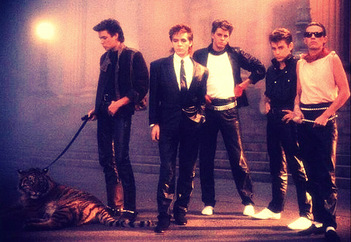 During the eighties you probably used to listen to Eye of the Tiger to perk you up and help you find your motivation to face the cruel, cruel world. It was a powerful song, and especially helpful when you had to get to work wearing your suit and your white trainers that you changed out of as soon as you got to your desk, because, well, it wasn't very professional to walk around in a suit and white sneakers. Throughout the day, it was likely that you would have to hum the song to yourself and resist the urge to throw air punches, promising revenge while that nasty cow boss of yours took all the credit for all your hard work. Oh shit, wait... something's doesn't sound right here! Oh, sorry. I got so carried away that I thought you were Melanie Griffith in Working Girl for a couple of hot minutes. Awkward. Let's scrap that tiger then, shall we? I mean, it was a kind of novelty tiger, and I hate novelty stuff. I hated the Proclaimers. I hated Bobby McFerrin. And most of all, I hated Dire Straits. All three of these were 80s novelty acts in my books that we are still paying the consequences for. Of course, when I think of the elegance, sophistication and the lean, mean killing machine that sums up what an eighties tiger was all about, I of course think of Duran Duran. They had some hot brothers, there was Ni(c)k Rhodes, who, I still think has the greatest name of that decade, and then of course, there was Simon Le Bon (runner up in the poncy name stakes). For a brief while they were the kings of the pop jungle. And people loved, loathed and feared them in equal measure, just as we do tigers in the wild. I almost want to exclude the following tiger from the great tigers in pop culture series, because, Duran Duran were more into wolves. I still can't get that Hungry Like The Wolf song out of my head all these years later. But the tiger that Duran Duran brought to the world is too powerful to ignore. Teenage girls, a presumably smaller portion of boys, and general pop lovers usually thought Duran Duran were the bees knees for a fleeting moment. They were like a group of cosmopolitan Brits: always on yachts, marrying French supermodels, yapping on about Rio and all kinds of wild animals, and you could pretty much always find one of them backstage (anywhere) or in the gossip rags of the time. For the first half of the eighties, they were everything, and then, well, they weren't. They kind of vanished, even though Notorious made it seem like they had a bit more life in them when 1986 rolled around and Ordinary World broke everyone's hearts. Of course we also had to put up with things like The Power Station but, well... it was the eighties. Their disappearance didn't really matter. They had already made their contribution. They did it back in 1983 when they introduced the world to one of the great tigers in pop culture: the ragged tiger. Their mysterious, symbol heavy third studio album (are you ready for another poncy name?) Seven and the Ragged Tiger featured Union of the Snake (why the obsession with wild animals?), The Reflex and of course, Tiger Tiger. It was a bit more dance and synth oriented than their usual stuff, but it was the last thing they did before they unleashed the shockingly awful Wild Boys onto the world. But more importantly, the ragged tiger was what got people wondering whether or not Duran Duran were actually satanists. There was of course a brief phase in the late eighties when the media were obsessed with playing pop records backwards to see if Satan was communicating to the masses. These days there's probably a Youtube page or an app for that kind of thing. Or you could just ask Trump directly what today's message is. Back then, you didn't need to play the Ragged Tiger backwards to know if it was other worldly. You could just look at the album artwork, which was dripping with illuminati symbols. You could look around and note the existence of Duranies (Duran Duran fans... hello, cult!) for more proof that something sinister was going on. Or you could just listen to Tiger Tiger, a completely instrumental track which was proof of the devil's work! After all, Satan needs no words! Duran Duran made better records before and after this one, but the Ragged Tiger is surely one of the greatest tigers in pop culture, because it was so powerful that it enlightened us to the dark sorcery that was behind Duran Duran, their ridiculous names and their cult like music, and for that, we should be thankful. You can enjoy the dark magic and their message further with this fan made video. 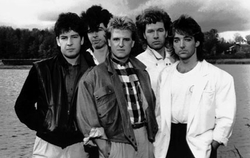 I ALWAYS thought Canada was too cold for tigers - especially the rocking variety. Not too cold, of course, for radio friendly rockish music. I mean look at the stellar talent that Canada has pushed out into that arena: Alanis Morisette, Alannah Myles, Bryan Adams, Nickelback... Avril Lavigne. Amazing. We all love the eighties and nothing screams nostalgia like big hair, a big power ballad or a strange mix between the two. Enter Glass Tiger. They took over the world in 1986. They won Juno Awards and had (2) top ten hits and were partly responsible for people burning the tips of their fingers at concerts because they had to hold onto the little gas thing on their lighters. These days there's probably an app for that kind of thing. You know, you can go to a concert today, and your iPhone can probably display a flickering candle on its screen when the big, heart breaking ballad kicks in to gear. I don't really know much about Glass Tiger but I still know all the lyrics to Don't Forget Me When I'm Gone. That I think, is a mark of respect for the first of the great tigers in pop culture. The Glass Tiger.  WE are almost at the second anniversary of the airing of Never Tear Us Apart, the Australian telemovie/dramatisation of the story behind INXS. In addition to documenting the trials and tribulations of what was perhaps Australia's biggest commercial music act of all time, the drama remains a testament to just how powerful television remains as a taste maker. Back in February 2014, the Seven network in Australia created hysteria in airing a two part series which was created with the input of the band and the band's longtime manager Chris Murphy. It's no coincidence how prominently Chris Murphy features in the program. It was a light, made for TV special which beyond charting the band's rise documented how Michael Hutchence's charisma was so powerful that it eclipsed interest in all the other band members. As a fan of the band even I found it hard to keep track of the other characters. Hutchence was INXS and the telemovie didn't seem to dispel the notion. But in hindsight, the 2 parter has proven to be an incredible vehicle for the rediscovery of INXS as a musical band. It's true that for almost fifteen years, from the end of the 70s to the early 90s, when they reached their commercial peak, INXS' star was one in ascendency. Their star burnt its brightest with the phenomenal success of 1987's Kick which sold over ten million copies. Now, there are certain things that define success in Australia. At the heart of them is the uneasy sentiment that the Australian media conveys when a monster gets too big. It's what feeds the Tall Poppy Syndrome which is a huge part of the Aussie mentality. You see, Australia, unlike the US demands that even its most successful people display humility and a sense of community at all times. Basically, if you reach the stratosphere of success in Australia, the mathematics demand that the media will try to cut you down a peg or two, in order to remind you of where you stand in the community. The teleseries milks that idea: it was perhaps part of the reason why the band eventually fell out of flavour with the local media. But I would say that it wasn't really the reason why the band eventually fell out of standing with Australian audiences. INXS maintained their musical influence for years before their commercial downturn. But that downturn coincided with the splintering of popular music in the early 1990s. By then there was no prevailing sound that dominated the charts. You were just as likely to have a number one with a pop record as you were with a rap, rock or country song. And for a band that repeatedly perfected rather than experimented with its sound, there wasn't a lot of novelty on offer almost twenty years on. Theirs was a sound that was never really reinvented until it became a clear, and perhaps slightly desperate attempt on their parts to reconnect with mainstream audiences long after it was clear that the magic of their formula had started to fade. I finally got around to watching the series last night here, and I enjoyed it, for one because a friend of mine was in it, playing a journalist (hi Maria!) and she got the chance to be part of a crack about Adam Ant which I know would've made her day. The choice to use original INXS recordings throughout was genius as was the idea, if overused, of using actual crowd footage from some of INXS' most energetic gigs. Their early 90s Wembley gig is electrifying to watch. If you ever want to know where all the Aussies are in London, just check and see if there's a touring Aussie band in town. But, well, overall it's your typical, made for Australian television fare even if there is a nostalgic air to it for the most part. It's interesting to note that for the better part of the nineties, INXS rarely managed to make a dent in the music charts, both before and after Michael's death. Album after album after X (1990) struggled, as did their singles. The malaise had set in by then, despite their incredible back catalogue and achievements. But since the airing of the tele-series, their greatest hits album, The Very Best has remained firmly lodged in the Australian album charts. It has barely left the charts after rocketing back to #1 on the back of the series being televised. And for a band whose creative output since the passing of Michael has gone unnoticed (a reality TV show to find a replacement for Hutchence and a revolving door of replacement singers never got them back into the hearts of audiences - and is strategically ignored in the series), consistent sales of the greatest hits album has led to it being certified 5x platinum. Those platinum awards, and the ongoing resurgence of their music is more testament to the power of television than anything else. Who knew that the old faithful idiot box could still be king in the internet age and that nostalgia continues to trumps innovation? Very pleased to announce that Vinyl Tiger is now available exclusively via Amazon's Kindle store.
Even if you don't have a kindle, you can download Vinyl Tiger (and thousands of other titles) to your PC/tablet or mobile using Amazon's free kindle software. Vinyl Tiger is the story of Alekzandr, an eighties club/disco act who is a little musically challenged. But he's got a strong look, loves a bit of kohl and knows what to do in front of a camera. And with the arrival of the music video, which revolutionizes the music industry, he might just be able to be something more than a one hit wonder. Vinyl Tiger is a reflection on how much popular culture has changed since the 1980s. Alekzandr may well be a new romantic, but he's also a heart breaker. His story is the story that so many of us share: the one where we try and reconcile our desires and ambitions with the world around us and the people in our lives...it's just that his plays out against the backdrop so many of us grew up in: that of 80s and 90s popular culture. And yes, he's a gay male pop star, because every great male pop star should be, but, as we discover through the course of the story, that's just a categorization: another obstacle that he has to overcome...and one that's ultimately irrelevant. Because a pop icon's job is to push the culture forward and to make waves, not just music. Vinyl Tiger is available now via Amazon kindle. KindleUnlimited and Prime members have access to special/free offers.  SOMEONE must have forgotten to send me the memo. Who exactly could have been responsible I have no idea, but get this... The Go-Go's at some point crossed the threshold from one time wonders to influential rock band. There's a lot of goodwill directed at them, particularly because they were the first all female rock band to score a pretty much self penned No.1 album and they had a few cruisey hits, in particular Our Lips Are Sealed. They don't earn the musical respect that Joan Jett, Chrissie Hyde or even The Bangles still do, but that's because their recognition is based on what their success symbolised rather than what they actually produced. I'm not here to fight the fight for The Go-Go's, as much as I dig their achievements. When they went their separate ways, famously acrimoniously, Jane Wielden made the odd grab for attention, but there was only enough space in the universe for Belinda, and even then not for long. She was the epitome of the new California girl. Remember in the 60s and 70s how California was portrayed as the land of the free love, of stopping the bomb and shaking up the changes inthe world? In the 80s the depth we associated with California evaporated. It became the kind of sun drenched landscape where deep thought drifted out over the Pacific, and to some extent still remains that way in the public consciousness. Yes, its home to the Silicon Valley, but its still a land of California Girls (and boys). And so, after the Go Go's made that transition away from Punk Lite to pop, Belinda took the ball and ran with it. She had a couple of lightweight lovelies in the mid 80s; Heaven Is A Place on Earth and Mad About You among them, but when she came back onto the scene in 1989 with Runaway Horses she momentarily found the right mix between guitars, radio inspired rock and mainstream pop and made it her own...and ours. Click on READ MORE to continue the post... 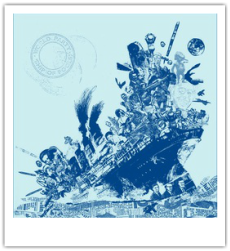 SOMETIMES it's not about fighting the fight. Sometimes you just need to learn how to make your peace. Like most everyone else I suffer from repeated recurring song affliction. You know, when you wake up in the morning and you have a song already firmly lodged in your head? Unfortunately for me, of late, that song has been World Party's Ship of Fools. Let me say that I HATED that song when I was a kid. I think it was due to the video, which was freaking ugly. And what was with the polarisation effect? Cheap and nasty; polarising audiences by using that kind of visual technique is not a good idea. It was like those bad home made VHS video camera special effects. You know, like the fade out and fade in. Oooh. Nasty. I know that as a 12 year old when that song came out in Australia, my tastes were not refined enough to appreciate the song, even if I already knew that the sentiment was right. Basically even back then I knew that the world was full of idiots. But now, I am making my peace with the song. The lyrics are pretty timeless even if the accompanying music seems like something that would have been best left on the DVD bonus features of The Commitments, with which I refuse to wave the white flag. The idea of being stranded on a ship of fools is not a unique idea, but nor is it one that is often explicitly stated. We read about it all the time; we read about the lowest common denominator, of spectacular lapses of judgement and rampant stupidity. Hell, we come across it every day of our lives. The song, the video, even Karl Willinger's styling all deals with ugly, purposely or not. But that is the central idea of the song right? That humans are flawed because of their ugly and stupid nature. And that there is always somebody who feels that little bit more superior. That a song like this could share house in the top ten at a time when Stock Aitken & Waterman were golden, Whitney Houston had crimped extensions and Bon Jovi were single handedly fighting the fight for leather vests and hairy chests, I simply have to lay down my arms. World Party. I am making my peace with your ship of fools. |
Dave
|
|
|
Dave Di Vito is a writer, teacher and former curator.He's also the author of the Vinyl Tiger series and Replace The Sky.
For information about upcoming writing projects subscribe to the mailing list. Dave hates SPAM so he won't trouble you with any of his own. He promises. |
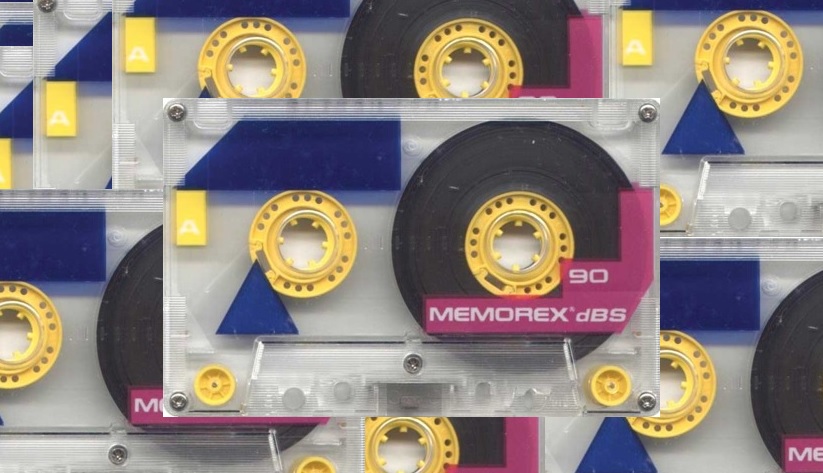
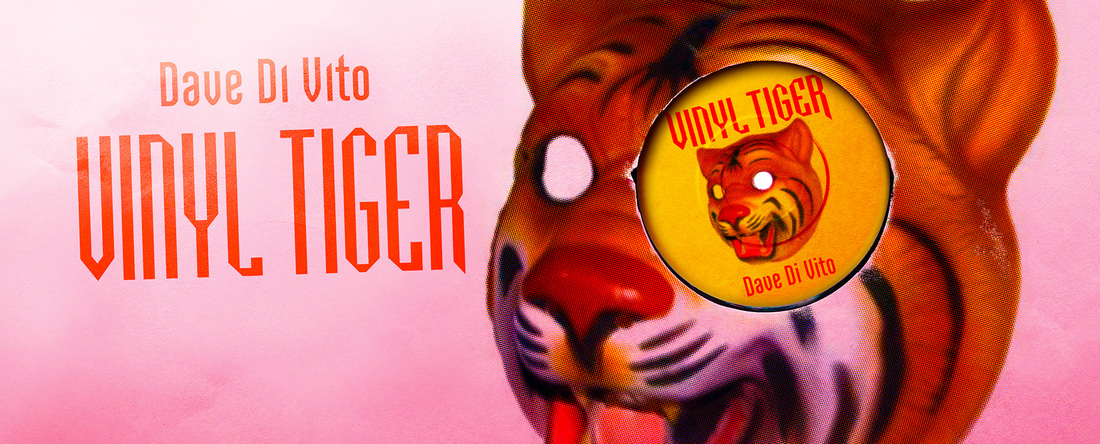

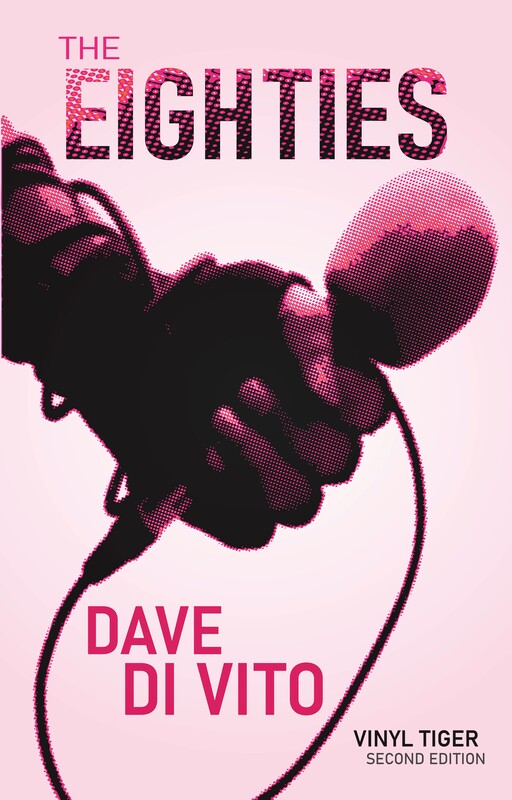
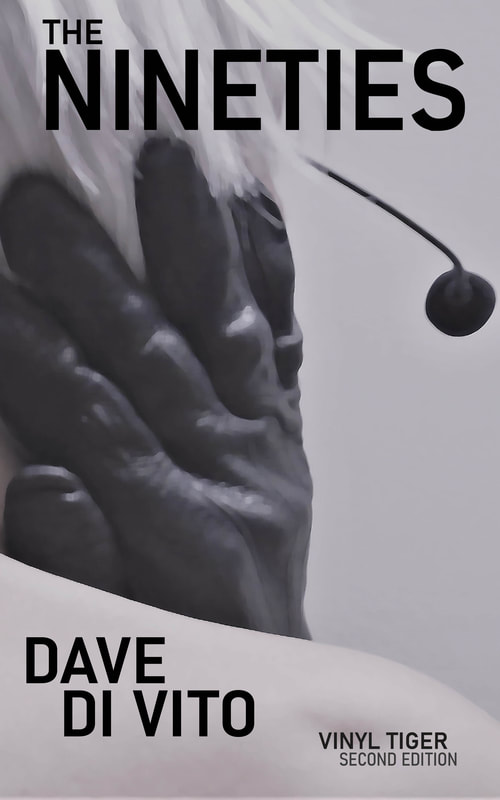
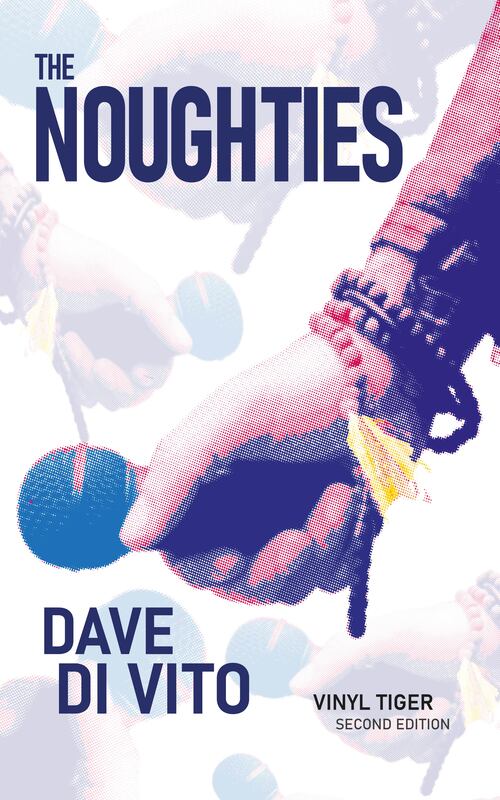
 RSS Feed
RSS Feed